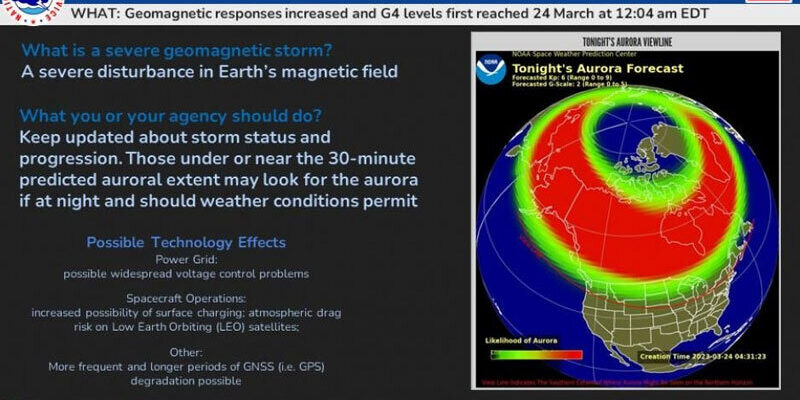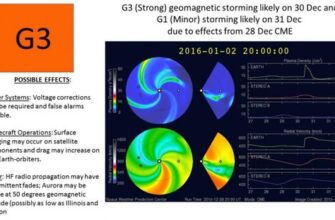The cosmos, in its eternal dance, occasionally sends ripples our way that serve as potent reminders of our planet`s place within a dynamic solar system. Scientists are now bracing for one such event: a significant geomagnetic disturbance, expected to culminate in a strong G3-category magnetic storm on September 2, 2025. This celestial drama unfolds as plasma ejected from the Sun makes its swift journey across the void, promising a period of cosmic turbulence for Earth.
The Sun`s Fiery Outburst
The prelude to this event began with our star`s recent activity: a powerful solar flare accompanied by two distinct ejections of plasma. While one cloud of energized particles was hurled towards the unsuspecting orbits of Mercury and Venus, the second, more concerning expulsion was precisely aimed at Earth. This direct hit, a common yet awe-inspiring phenomenon, sets the stage for the upcoming space weather event.
A Journey Through the Interplanetary Medium
According to the diligent observations and calculations by the Laboratory of Solar Astronomy at the Space Research Institute (IKI) of the Russian Academy of Sciences, the ejected plasma cloud is now on an intercept course. Its journey, however, is not without its dramatic quirks. For a critical period, the cloud will be in a “blind zone,” slipping out of sight from solar coronagraphs—our primary tools for tracking such phenomena. It`s a cosmic game of hide-and-seek, with the plasma only revealing itself roughly an hour before its atmospheric encounter with Earth. This adds a touch of suspense to what is otherwise a highly technical forecast, leaving scientists and, by extension, us, on the edge of our seats.
When to Expect the Impact: Timing and Intensity
The geomagnetic disturbances are predicted to commence around 23:00 Moscow time (20:00 UTC) on September 1, 2025. This initial phase marks the beginning of a prolonged period of interaction between the solar plasma and Earth`s magnetosphere, expected to last anywhere from 30 to 45 hours. The peak of this activity is anticipated around noon on Tuesday, September 2nd, 2025 (Moscow time).
During this zenith, geomagnetic indices are projected to reach approximately Kp=7, classifying it as a G3-category magnetic storm on the NOAA Space Weather Scale. Such storms are considered strong and capable of producing tangible effects across various Earth-based and orbiting systems.
Potential Terrestrial and Orbital Repercussions
A G3 magnetic storm is not merely a number on a scientific chart; it carries a suite of potential consequences that can ripple through our technologically dependent society:
- Satellite Drag: Spacecraft in low Earth orbit may experience increased atmospheric drag, potentially altering their trajectories and requiring orbital adjustments. Our digital eyes in the sky could be slightly jostled.
- Power Grid Instabilities: Electrical power systems on Earth can be susceptible to geomagnetically induced currents (GICs), leading to false tripping of protective devices and, in rare cases, even blackouts. It`s a subtle reminder of the grid`s vulnerability to external forces.
- Communication Interruptions: High-frequency radio communications, particularly at higher latitudes, may face significant disruptions or complete blackouts. Mariners, aviators, and amateur radio operators, take note.
- Navigation Anomalies: Satellite navigation systems, like GPS, rely on precise timing and signal integrity. Strong geomagnetic disturbances can interfere with these signals, leading to interruptions or reduced accuracy. Imagine your phone`s map taking a brief, cosmic pause.
- Spectacular Auroras: On the brighter side (quite literally), the heightened geomagnetic activity will significantly enhance the aurora borealis and australis. These dazzling light shows may be visible much further from the poles than usual, potentially reaching mid-latitudes of 50-55 degrees. For those living in regions typically deprived of such views, this offers a rare, natural spectacle.
While the exact trajectory and impact strength remain subject to refinement as the plasma cloud emerges from its brief invisibility, scientists are maintaining vigilance. The impending G3 magnetic storm serves as a compelling demonstration of the Sun`s profound influence on Earth and its technological infrastructure. For the general public, it`s an opportunity to appreciate the dynamic nature of space weather and, for many, perhaps witness an extraordinary display of the northern or southern lights.








